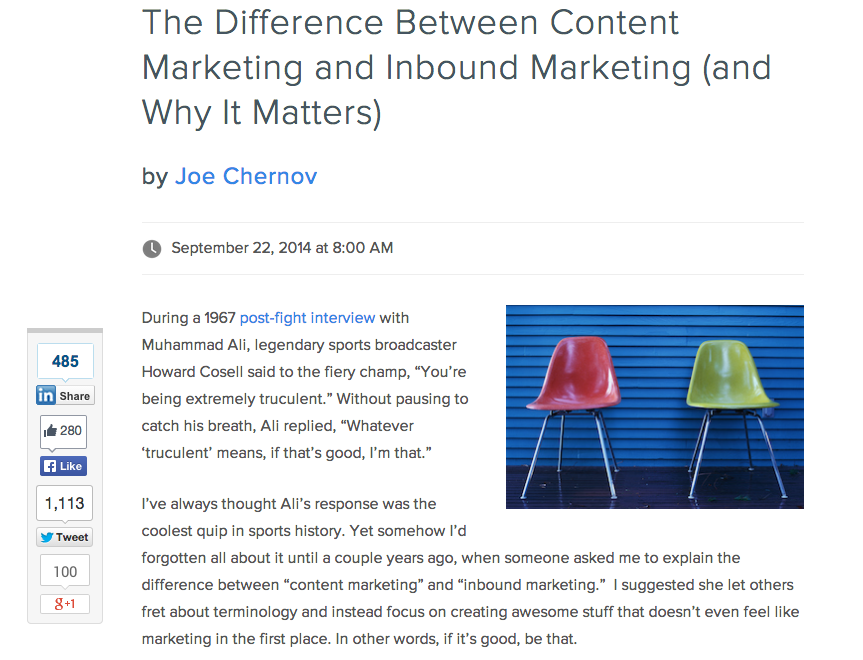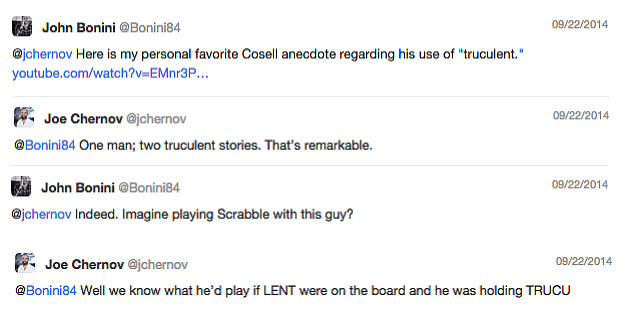Topics:
Marketing StrategySubscribe now and get the latest podcast releases delivered straight to your inbox.
 Compelling headlines.
Compelling headlines.
They're "all the rage" these days.
While I'm not here to discredit the importance of an attractive headline, it is time that someone set the record straight.
A great headline does not guarantee a great article. I mean, there's a lot of run-of-the-mill content out there cleverly disguised by witty, informative headlines, wouldn't you agree?
It should be a crime.
However, the truth is, content saturation is at an all time high, and if you want to ensure that your work catches on, you must find a way to balance the two.
Know your voice
A presence without a distinct voice will be easily overshadowed.
In order to establish an appropriate voice for your business, consider asking yourself the following 3 questions before you write a single word:
Who are you writing for?
Think about the way we talk to babies or pets. Like clockwork, we all resort to that weird high pitch, slow pace babble (I know you know what I'm talking about.)
While this voice is known to get babies smiling and tails wagging, you'd never talk to your boss that way, would you?
Knowing who you're speaking to plays a critical role in defining the way in which you communicate. To avoid missed marks, it's important that you start by defining who your ideal audience is.
If you have well-defined buyer personas in place already, now is a great time to pull them up for reference. If you don't, we've put together an awesome free kit to help you get started.
What are you trying to say?
What's the overall message that you're trying to convey? Why should your audience care?
In order to convey a message that is capable of capturing and holding the attention of the audience you wish to reach, it's important that you're committed to tying the reader back into the equation.
It's about them, not you.
Where are you saying it?
The medium in which you are communicating your message will directly affect the way you present it.
While an ebook allows for many words, a tweet will require you to position what you are trying to say in 140 characters or less. This type of constraint, combined with the quick, informational feel of the platform play a big role in shaping what it is that you have to say.
Simplify everything
Here's the cold, hard truth: 79% of people scan any new page they come across, and only 16% read word-by-word. (Source: Nielsen Norman Group)
You do it. I do it. We all do it. So why are we failing to take that into consideration when we're writing?
With readers strapped for time, you can't afford to beat around the bush.
Put the important stuff first. Save the fluff for your sandwich.
With that being said, here are 2 ways to strip down your content:
1. Eliminate the unnecessary
The thing about adjectives and most adverbs is that they're expendable. Your writing can do without them.
In fact, Sol Stein, author of Stein on Writing calls this excess elimination "flab-cutting" (gross but effective, right?)
"Flab-cutting is one of the best means for improving the pace of both fiction and non-fiction. When eliminated, the loss of fat has the welcome side effect of strengthening the body of the remaining text," says Stein.
2. Break up the text
Rather than presenting the reader with a large block of text, always look for a logical place where you can insert a space.
A good rule of thumb is to read your post through and insert a space wherever you'd pause to take a breath.
White space along with the inclusion of visual content helps to make the content feel more manageable, while maintaining the interest of the reader.
Make a connection
Analogies help to color your otherwise black and white sentences. They provide clarity. Most importantly, they create a memorable reference that people can relate to.
One that sticks.
A couple weeks ago, HubSpot's VP of content Joe Chernov, published this article:

Led by a parallel between a post-fight interview with Muhammad Ali and the great debate surrounding the difference between inbound marketing and content marketing, this article works to link the overall concept to something familiar.
As a result, it caught the attention of our marketing director, who then initiated this conversation with Joe via Twitter:

While the banter they exchanged was well, banter, without the analogy, it's likely it would have never even happened.
Point being, when you deliver something that people can relate to, it becomes much easier to stir up engagement and foster relationships.
Remember: relatable content is valuable content.
Free Assessment:

